20+ Sample Sick Time Policy
-
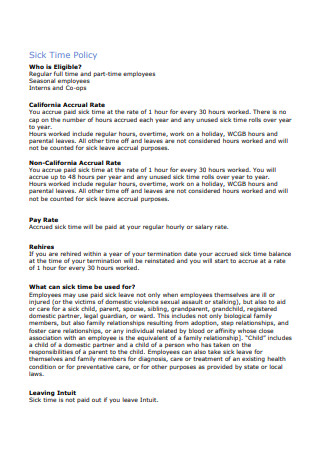
Sick Time Policy
download now -

Sample Sick Time Policy
download now -
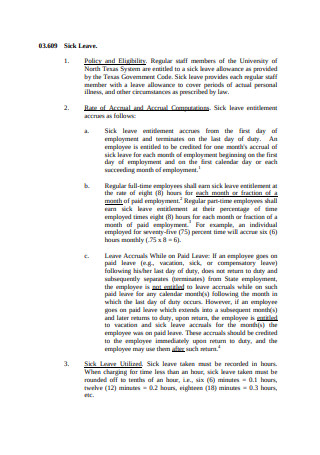
Sick Leave Policy and Eligibility
download now -
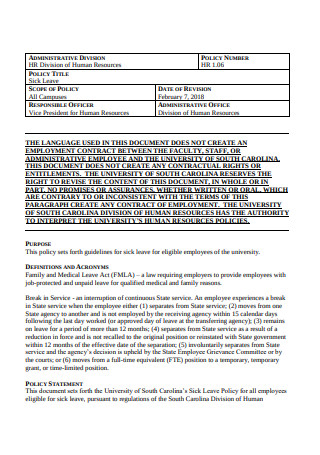
Sick Leave Policy & Procedures
download now -
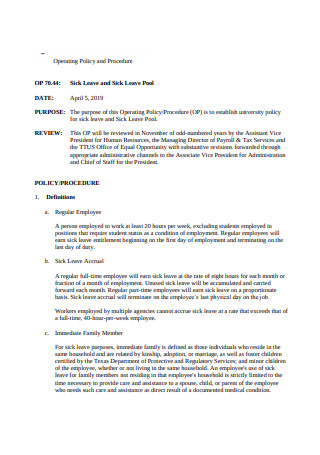
Operating Policy and Procedure
download now -

Absence from Work Policy
download now -
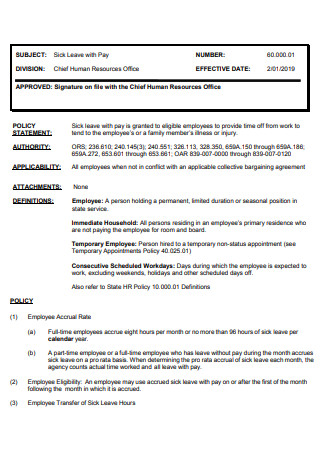
Sick Leave with Pay Policy
download now -
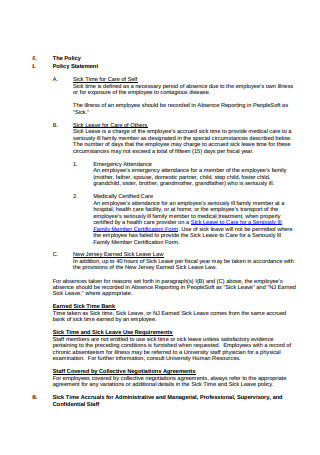
Sample Sick Leave with Pay Policy
download now -
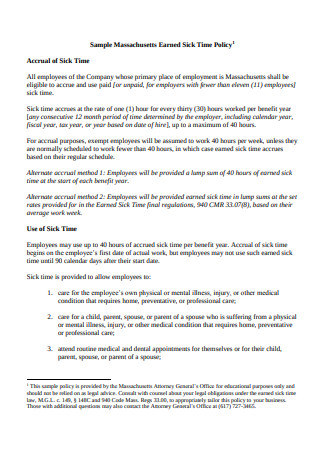
Earned Sick Time Policy
download now -
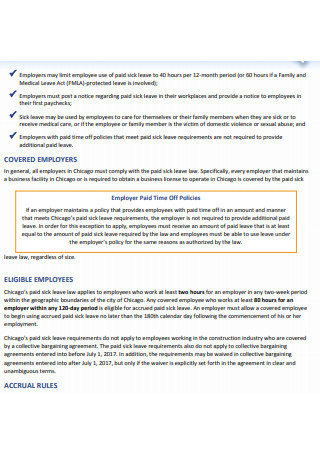
Employer Paid Time Off Policies
download now -
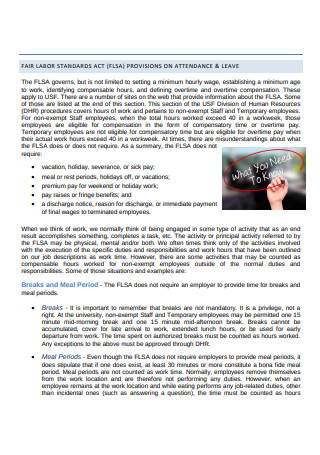
Attendance and Leave Policies and Procedures
download now -
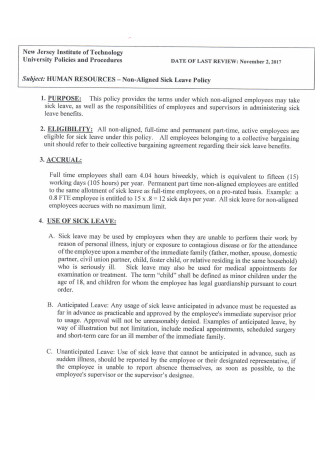
Non-Aligned Sick Leave Policy
download now -
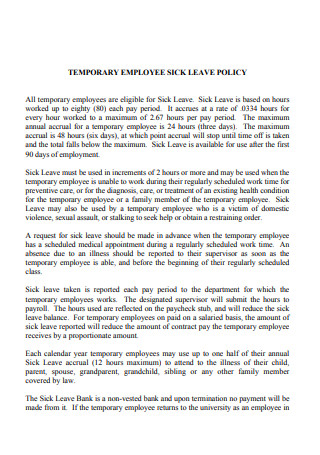
Temporary Employee Sick Leave Policy
download now -
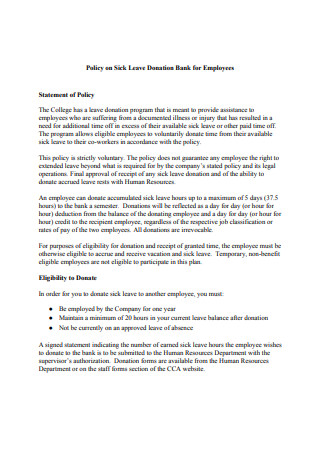
Policy on Sick Leave Donation Bank for Employees
download now -
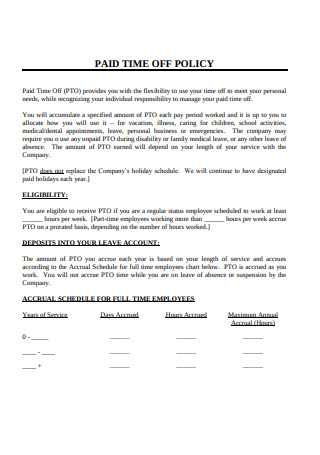
Paid Time Off Policy
download now -
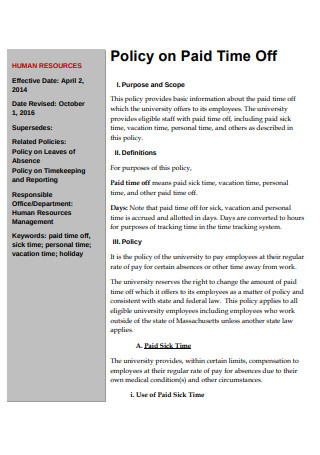
Policy on Paid Time Off
download now -
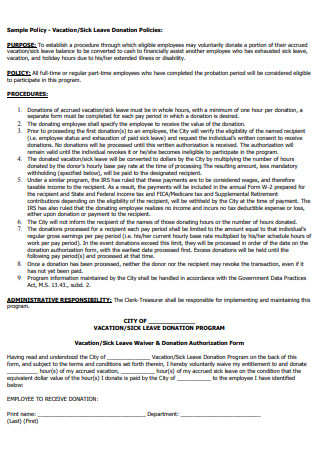
Vacation/Sick Leave Donation Policies
download now -
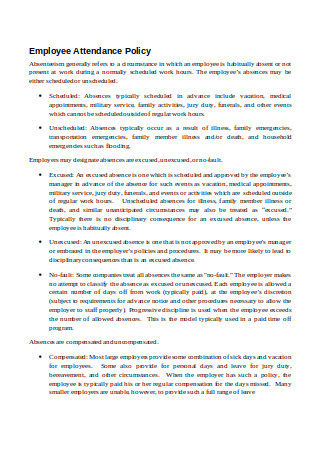
Employee Attendance Policy
download now -
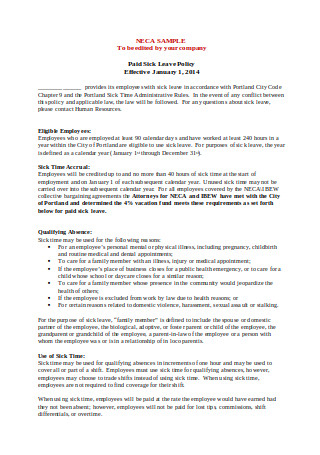
Paid Sick Leave Policy in DOC
download now -
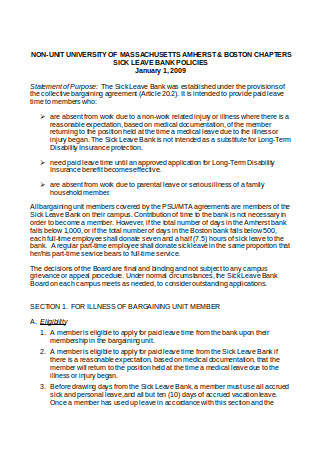
Sick Leave Bank Policy
download now -
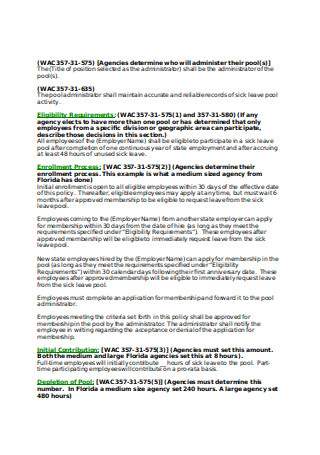
Sick Leave Pool Sample Policy
download now
What Is a Sick Time Policy?
According to the survey made by the U.S. Bureau of Labor Statistics, 85% of workers who are full-time are entitled with paid sick leave. Giving your employees the right to use a number of sick leaves is one thing, providing them with a policy that can regulate the usage of these sick leaves is another. A sick time policy is a simple policy implemented by organizations to make sure that their employees are fully aware about all matters related to their sick time entitlements.
Standard Sick Time Policy Content
Having a sick time policy can improve your employee retention efforts. If your employees feel that you care for their overall well-being, they will be more than willing to work for you in the best way they could since they can count on you especially on days when they need to rest because of sickness. With this, you have to make sure that you will come up with a comprehensive sick time policy that can promote an in-depth understanding on how sick leaves work within your organization. Some of the most important items that should be included in a basic sick time policy are as follows:
1. Requirements for the Paid Sick Time’s Approval
You have to let your employees know that not all of their sick leaves will be paid, unless otherwise stated in their employment contract. If your company only offers a limited number of sick leaves, it is essential for you to have a list of all the requirements that your employees need to submit before you can consider their sick time as approved and paid. Let your workforce members be aware of the notifications that they need to give as well as the certifications that they must submit to prove that they are absent from work because of a particular illness or sickness.
2. Specifications on Sick Pay
Your time off policy that focuses on the sick leaves of your employees must be very particular with how the payment for sick leaves will be done. Guide your employees about the process of sick time tracking so they can be assured that they will be paid for their sick leaves once they have submitted all the requirements of the organization for the given circumstance. Other items that you would like to discuss in relation to paid sick leaves must be thoroughly specified in your sick time policy.
3. Classification of Absence from Work Due to Sickness
Provide a list of sick time that your employees can use. As an example, how do you define a short-term sick time between a long-term one? What are the things that the employees of your business need to do to make the sick leaves authorized? How can a sick leave be credited under the scope of certified paid time off policy? You need to be able to answer these questions so you can clarify issues especially those that are related to payroll. Classify sick leaves accordingly so your employees can be knowledgeable of the particular type that is fitted for their needs.
4. Regulations for Sick Leave Usage
Present the rules of sick time usage in your sick time policy. Make sure that these rules are straightforward and are not open for any other interpretations that can mislead and/or confuse your employees. Listing down all the sick time regulations in your sick time policy can make it easier for your business and your employees to be at the same page when sick leave-related concerns are brought to the surface.
9 Steps for Creating an Effective Sick Time Policy
If you will not have a sick time policy, sick employees will potentially just go to work rather than receive a pay cut. Developing a comprehensive sick time policy can help you become more particular with the needs not only of your organization but also of your employees. If you want to create a sick time policy that can work perfectly for your business, you have to know the items that should be included in the document. Following a process for sick time policy creation can be very useful when it comes to this matter. Here is a nine-step procedure that can enable you to come up with an effective sick time policy:
Step 1: Use a Downloadable, Printable, and Editable Sick Time Policy Template
It will be very useful if you will have a sick leave policy template at hand as you begin the planning of your sick time policy’s development. Templates are great tools that can enable you to format your own sick time policy accordingly. Having a suitable template can result to an organized, presentable, and detailed sick time policy document. Once you have already selected the template that you will use, you can already put your header and a title in the document’s layout.
Step 2: Develop an Informative Sick Time Policy Brief
Make sure that your stakeholders will be aware of the reason on why the sick time policy needs to be created. Write down the main purpose of the sick time policy which can also serve as the introduction of the document. You have to ensure that you will review the existing sick time regulations of the organization, if there are any, so that your sick time policy brief will not be against any of the items that are already being implemented by the management and the human resource department. If there are certain changes that you would like to execute in your current sick time policy, it is important for you to specify this at the very beginning of your updated sick time policy.
Step 3: Set the Scope of the Sick Time Policy
It is essential for you to describe the employees who are scoped by the sick time policy. As an example, let the sick time policy provide the number of sick leaves that employees are entitled with based on their work position and their length of stay or employment in the business.
Step 4: Identify All the Elements of the Sick Time Policy
Promote transparency in the sick time policy’s content. Define the limitations of using sick leaves. More so, discuss the difference of the sick leave policy’s content with that which can be seen in the other leave policies of the organization. Have a strong foundation of what the sick time policy is made of so you can make sure that the elements of the document can contribute to the effective implementation of your key regulations.
Step 5: Precisely Describe the Ways on How Sick Time Works
You always have to keep in mind that sick people will most likely not perform at their best. Last 2015, in the United States, 39% of private-sector workers are not entitled with any sick leaves (washingtonpost). If the inefficiency of the workforce is what you are worried about, then create a segment in your sick time policy that can guide your employees on the proper usage of sick leaves. Discuss particular details from the time that the employees will give a notice that they will not be going to work because they are sick up to the recording of a sick leave’s approval.
Step 6: Have an Unused Sick Time Regulation
Develop an unused sick leave policy. This can let your employees know whether they can carry over their unused sick time for the next operational year or if they can just get the cash equivalent of the sick time that they were not able to use.
Step 7: Guide the Employees Through Your Sick Time Filing Process
Aside from the things that the employees need to do, your sick time policy should also enable your workforce to know the procedures that the human resource department and the management need to undergo so that sick time; especially the paid ones, can be filed.
Step 8: Provide a Few More Reminders and/or Any Other Relevant Details
If there are more information that you would like to put in the sick time policy aside from the items that have already been written above, do not hesitate to do so. Different companies have different sick time policies which is why you have to focus on the details that you would like to relay especially if you think that it can impact the successful usage of your own sick time policy.
Step 9: Finalize the Sick Time Policy of Your Organization
After finishing the initial draft of the sick time policy, let your stakeholders review the document. Finalize the sick time policy to ensure that it is free from any grammatical errors, features and layout lapses, and other mistakes that can lessen the quality of your output.
Benefits of Developing a Clear Sick Time Policy
It is important for your organization to develop a sick time policy so that you can protect your rights with regards the particular matter. When allowing your salaried employees to take a sick leave, you have to make sure that they are well-aware of the sick time policy that they should abide to. This can help you align the expectations and understanding between both parties. Trust us when we say that having a sick time policy can be very advantageous for your organization as well as for the members of your workforce. There are several reasons why we highly-recommend the development of a sick time policy. A few of these are as follows:
Dos and Don’ts for Making an Excellent Sick Time Policy
A sick time policy should not be rushed. You have to ensure that you are guided with all the documents and relevant insights from involved stakeholders before you push through with the development of a sick time policy. Review your state laws, employment contracts, business handbooks, and other materials that contain details usable for the proper and outstanding creation of the content that you would like to specify in your sick time policy. Below are some of the guidelines that you can follow if you want to begin the development of your organization’s sick time policy at this very moment.
Do’s
1. Do Have a Clear, Understandable, and Straightforward Sick Time Policy
It is essential for you to use a language that your employees can easily relate to. Your sick time policy must be direct to the point, transparent, and concise so that your employees can further and truly understand the things that you would like them to follow and look into whenever they need to file their sick leaves.
2. Do Develop a Realistic Sick Time Policy
Your sick time policy must include information that are measurable and attainable. Do not include any details that you cannot realize or deliver as doing so can negatively affect your relationship with your employees. Include items that can remind your employees on how they can utilize their sick leaves only when they are truly sick. You can also set a number of guidelines and requirements so you can make sure that the sick leave usages of your employees are truly necessary.
3. Do Ensure That Your Sick Time Policy Is Always Updated
Whether you are a small scale business or a big corporation, it is essential for your sick time policy to always be up to date. Make sure that any changes on your rules and regulations with regards sick leave filing, approval, and usage are aligned with the current specifications of your sick time policy. Having an updated policy can enable you to promote precision and standardization when dealing with related matters.
Don’ts
1. Don’t Overlook the Legalities Aligned With Your Sick Time Policy
Look into the federal and state regulations and laws about sick time. You have to make sure that your sick time policy abides in the legalities of the state where your business is at. Do not overlook this matter as this can possibly result to legal disputes between your organization and your employees.
2. Don’t Be Biased When Making Your Sick Time Policy
Even if you have your attendance plans all laid out, there are still instances where an employee will call in sick. Even if there are different kinds of conditions and circumstances where sick leaves can and will be used, it is important for your sick time policy to be unbiased. Do not be subjective when developing the sick time policy as you need to ensure that your regulations and how they can be executed are standardized.
3. Don’t Make Your Sick Time Policy Intimidating
The goal of your sick time policy is to guide your employees on how they can use their sick leaves appropriately and accordingly. Hence, your sick time policy should not intimidate nor overwhelm your employees. Do not give them the impression that the policy is used to indirectly stop them from using their sick leaves. As much as possible, allow your sick time policy to be as formal and as professional as possible so you can set the right tone for its content discussion.
Set up your own sick time policy with the help of the references that we have listed above. Our downloadable and printable templates, samples, and other document guides can give you a more efficient time as you create an outstanding sick time policy for your organization.
